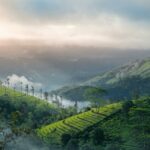
10 important Nepal Pollution Facts You Should Know
Nepal is a beautiful country in South Asia, known for its rich culture, diverse landscapes, and majestic Himalayan mountains. However, Nepal also faces a serious problem of air pollution, which affects the health and well-being of its people and environment. Here are 10 facts about pollution in the country that you should know:
Table of Contents
The country has one of the highest levels of outdoor air pollution in the world. According to the State of Global Air report 2020, Nepal ranked second among the countries with the highest outdoor PM2.5 levels in 2019, with an annual average of 83.1 micrograms per cubic meter (μg/m3). PM2.5, or particulate matter less than 2.5 microns thick, are among the most dangerous pollutants that can get past the nose and throat to enter the lungs and even the bloodstream.
Air
Air pollution kills thousands of Nepalis every year. The State of Global Air report 2020 estimated that air pollution was responsible for 42,100 deaths in Nepal in 2019, accounting for 16% of the total mortality. The main causes of death linked to air pollution are ischemic heart disease, stroke, chronic obstructive pulmonary disease, lung cancer, and lower respiratory infections.
The Kathmandu Valley is the most polluted region in Nepal. The capital city of Kathmandu and its surrounding areas suffer from severe air pollution due to various factors such as rapid urbanization, vehicular emissions, industrial activities, biomass burning, and dust from construction and road works. The air quality in the Kathmandu Valley often exceeds the WHO guideline of 10 μg/m3 for PM2.5 by ten times or more.
Study
Air pollution affects different groups of people differently. A study by Anobha Gurung, a doctoral candidate at Yale School of the Environment, found that personal exposure to PM2.5 varied based on occupation, location, and proximity to roads. For example, traffic police officers who worked in the middle of congested roads had an average exposure of 51.2 μg/m3, with an hourly maximum of more than 500 μg/m3.
Air pollution also impacts the environment and wildlife in Nepal. Air pollution can reduce visibility, damage crops and forests, acidify soils and water bodies, and contribute to climate change. Moreover, air pollution can harm the biodiversity and ecosystems, especially in the Himalayan region, where many endangered species such as snow leopards, red pandas, and musk deer live.
Solution
Nepal has taken some steps to address the air pollution problem. For instance, Nepal has introduced electric buses and vehicles, banned old and polluting vehicles, enforced emission standards and inspections, promoted clean energy sources such as solar and hydro power, and implemented green initiatives such as planting trees and creating parks.
However, more actions are needed to improve the air quality in Nepal. Some of the challenges that Nepal faces in tackling air pollution include lack of data and monitoring systems, weak enforcement of laws and regulations, low public awareness and participation, inadequate resources and infrastructure, and cross-border pollution from neighbouring countries such as India and China.
Protection
There are some ways that individuals can protect themselves from air pollution in Nepal. Some of the measures that people can take include wearing masks or respirators when going outside, avoiding outdoor activities during peak hours or high-pollution days, using air purifiers or filters at home or work, checking the air quality index regularly, and seeking medical attention if experiencing any symptoms related to air pollution.
There are also some ways that individuals can help reduce air pollution in Nepal. Some of the actions that people can take include using public transportation or walking or cycling instead of driving private vehicles, switching to cleaner fuels or renewable energy sources for cooking or heating, avoiding open burning of waste or biomass, reducing consumption and waste generation, and supporting environmental organisations or campaigns that advocate for cleaner air.
Clean and healthy Nepal
There is hope for a cleaner and healthier future for Nepal. With collective efforts from the government, civil society, private sector, media, academia, and citizens, Nepal can overcome the air pollution challenge and achieve its vision of a green and prosperous country. As Gurung says: “We have a lot of potential to improve our air quality. We have the resources; we have the technology; we have the people who are willing to work on this issue.”










